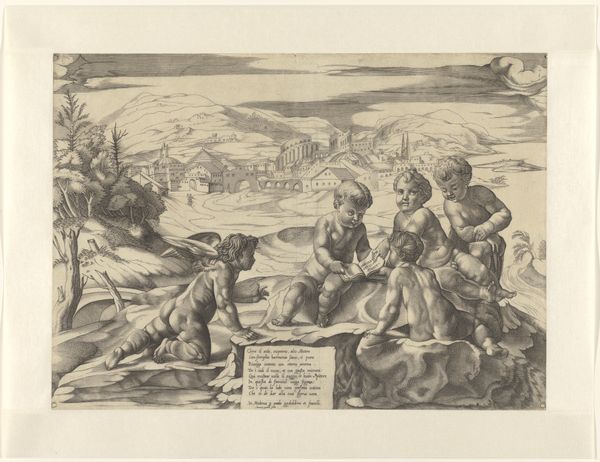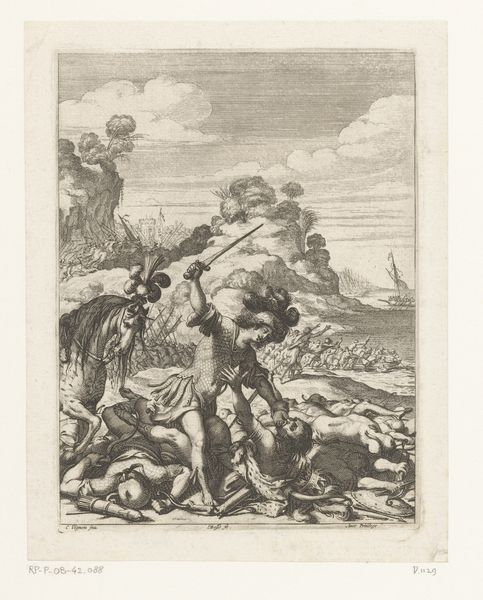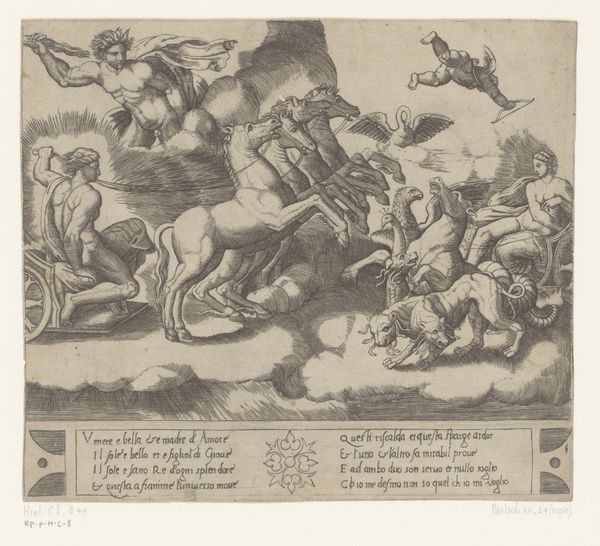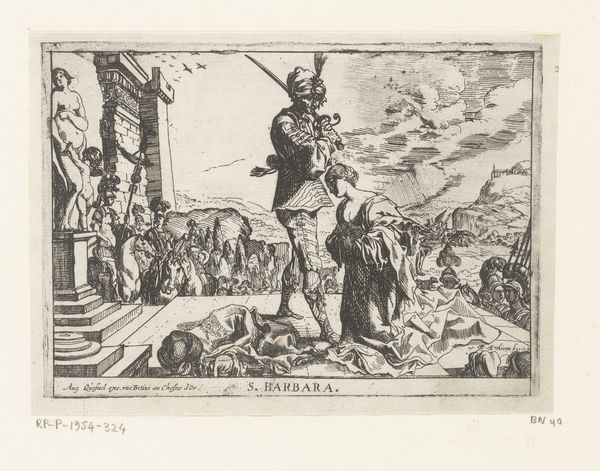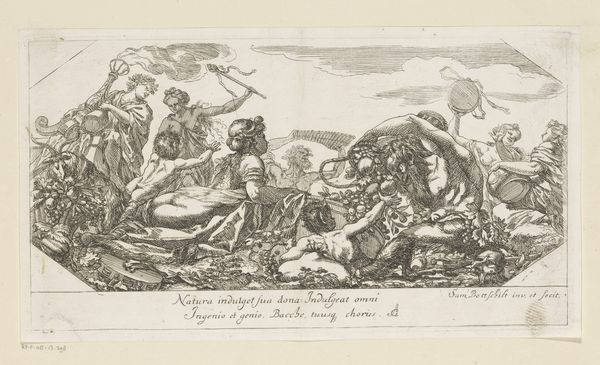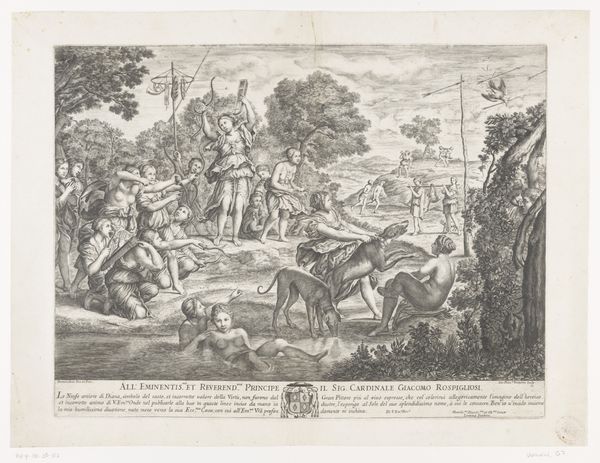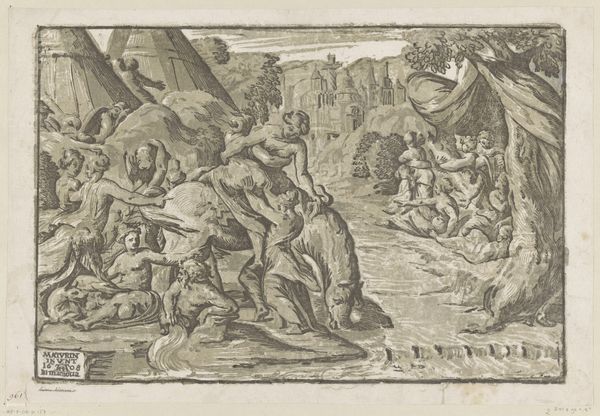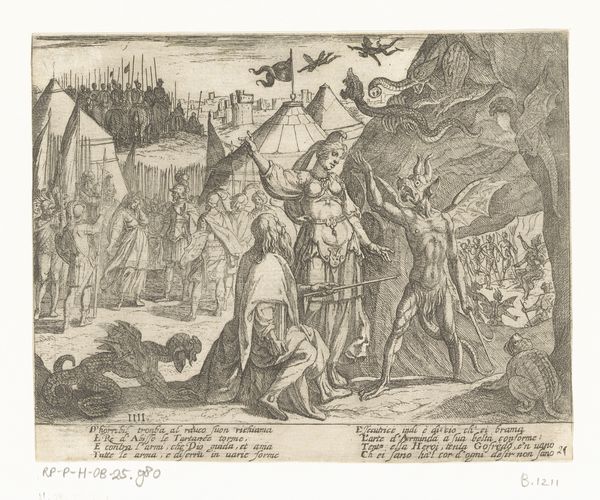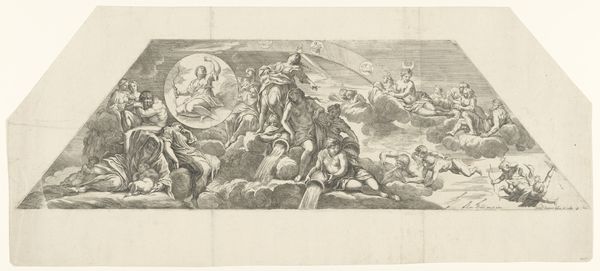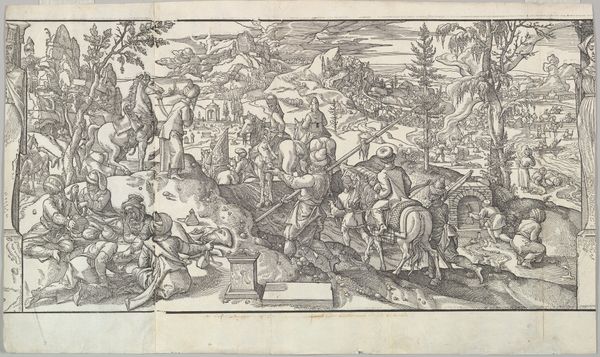
print, engraving
#
narrative-art
# print
#
old engraving style
#
classical-realism
#
mannerism
#
figuration
#
line
#
history-painting
#
remaining negative space
#
engraving
Dimensions: height 158 mm, width 221 mm
Copyright: Rijks Museum: Open Domain
Curator: What strikes me first is the density of this scene – figures jostling, straining to occupy the pictorial space. Editor: Agreed. We are looking at Georges Reverdy's "Conversion of Paul", dating from 1536 to 1569. It is an engraving – so think about the technical skill to produce this level of detail, of tone – on metal. Curator: Absolutely. Think of Paul's narrative importance in Christian tradition: persecutor turned apostle, his transformation echoes through time. Notice how the artist captured that singular moment when Saul is knocked from his horse. It is the drama of divine intervention embodied, the symbol of metamorphosis palpable. Editor: This image would have been reproduced multiple times. Where were they doing this? Who was printing and distributing these? Were they cheap, quickly made and easily accessible or carefully crafted one-offs for the rich? Curator: It carries resonances of Mannerism with the distortion and artificiality of forms adding to the drama, perhaps deliberately reflecting Paul's spiritual contortion, if you will. Editor: But let's look at the labour that’s involved to even create this scene and then to replicate it through printing, each image a slightly different copy. This isn’t divine intervention, this is craft intervention – manual and reproducible. Curator: Interesting! It reminds us images possess a life of their own. A singular representation of personal awakening for many, across time. How potent! Editor: And because of these means, the labor can reach places or speak to classes beyond the place of production or of original vision. How marvelous!
Comments
No comments
Be the first to comment and join the conversation on the ultimate creative platform.
